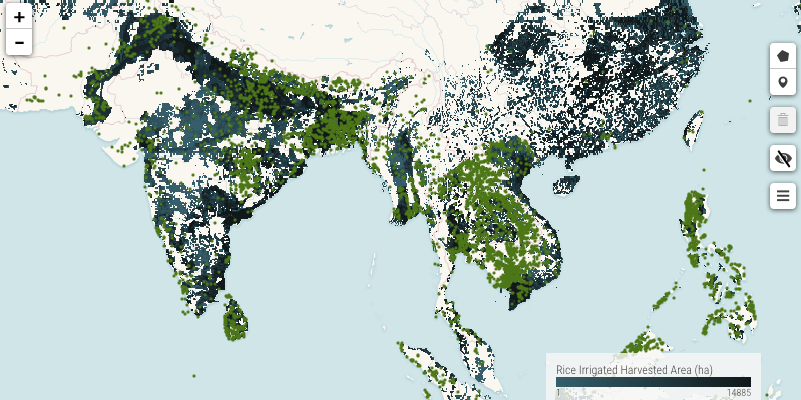GARDIAN, the Global Agricultural Research Data Innovation & Acceleration Network, is the CGIAR flagship data harvester. GARDIAN enables the discovery of publications and datasets from the thirty-odd institutional publications and data repositories across all CGIAR Centers to enable value addition and innovation via data reuse.
Among the goodies that GARDIAN harvests are two geo-referenced datasets: genebank accession localities from Genesys and 2005 crop production, harvested area and yield. I’ve often advocated here for the mashing up of these datasets. Here, for example, is irrigated harvested area (grey-black) and genebanks accessions (dark green) for rice in part of Asia.
The colour scheme needs work, I guess, but it’s a start.
There are also about 250 documents featuring the word “genebank” for you to explore.
GARDIAN is a product of the CGIAR Platform for Big Data in Agriculture.

